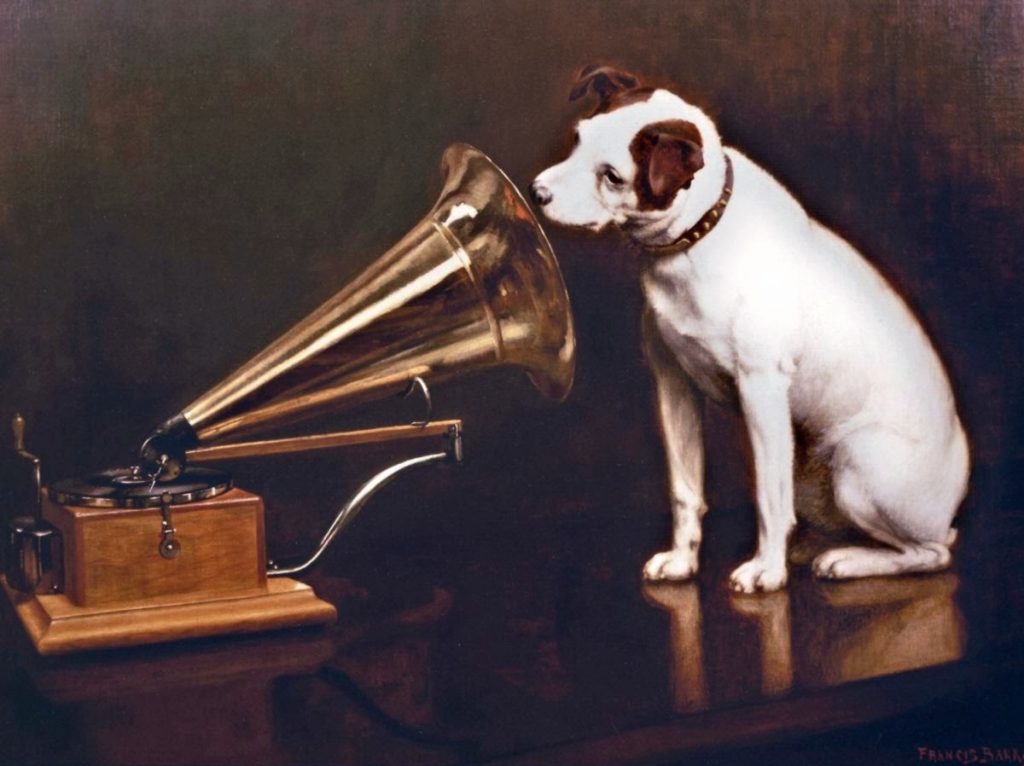
How was 18th and 19th century music performed 50 or 70 years ago? In this post clarinettist Elia Bianucci takes us into the fascinating world of early recordings.
Early recordings: the past you don’t expect!
by Elia Bianucci
It’s been a while since I first discovered early recordings, but I have listened compulsively to lots of them compulsively over the last period. And I must say that I kind of like them!
I am amazed at how many early recordings can be easily found on the internet, especially on YouTube and Spotify, and how much of a resource these can be for a musician interested in HIP. These recordings are such important documents from the recent past, from a time that we feel is close, musically speaking, but actually isn’t.
As musicians playing modern instruments, most of the time we find ourselves in a situation where traditions are involved: we happen to say or hear things like “traditionally this passage is played this way”, “it is a tradition to cut this part of the piece”, or “the singer traditionally makes this kind of variation at this point”. I reckon most people consider traditions to be an important part of cultural heritage, and we usually follow them without questioning too much. And I feel these people usually think these traditions were established a really long time ago, even a century or more. But by listening to the recordings, early ones and the less early ones, we can get a better picture and understand whether a tradition actually exists and when it started to exist. Nowadays we have a screen in front of our eyes, and at our ears, the drastic change that happened in the 20th century in the way of playing, singing and conducting.
Now, I don’t want to start talking about performing practices of the past inferred from listening to these recordings, first of all because I am not the right person for the job: I am not a musicologist, I haven’t taken any analytical courses on the subject, so I would be prone to make such simple mistakes that I’d be condemned never to open the case of my clarinet again if someone really involved in this field of research were to read this blog post. I just want to point out a bunch of people who made recordings I find interesting and extremely enjoyable to listen to.
The first is a conductor: Willem Mengelberg (1871-1951). I’ve listened to Beethoven’s third and sixth symphonies conducted by Mengelberg and I find them really cool.
Yes, they are not aligned to what we nowadays think was the performance practice at Beethoven’s time, in fact, these recordings are a bit post-romantic to my liking – as they should be since Mengelberg recorded in the first half of the 20th century! But who cares? I’m the first not to and you shouldn’t either! I like the way he plays with tempo to emphasise important passages or to create contrasts and how he manages to change the colour of the orchestra: and, this is even more astonishing when you think of the state of the recording technology back then.
The second and the third are singers: Fernando de Lucia (1860-1925) and Adelina Patti (1843-1919). They are two wonderful examples of how different singing styles can be and still create something truly beautiful. Adelina Patti catches me with her rubati and her portamenti. She might come across as a bit heavy at first, but after a few listens, I think she actually uses all these tools in the poshest way ever. Noteworthy is the change in the vocal register when she sings low notes: one can clearly hear thist in the recording of “Batti batti, oh bel Masetto” from Mozart’s “Don Giovanni” at the second 00:36-00:42. It always strikes me like lightning!
Fernando de Lucia is similar in his use of vibrato and rubato, and he is really wonderful at singing long notes with extreme diminuendos. I recommend everyone listen to the aria “E lucevan le stelle” from Puccini’s Tosca performed by Fernando de Lucia: I think this one is my favourite interpretation of the aria I’ve heard.
The last musician is a clarinet player: Charles Draper (1869-1952). I love how he plays, full stop. He has such a beautiful tone quality and uses tempo changes to the extreme but in such a refined way that when I discovered him, I immediately fell in love with him. I suggest listening to the recording of Brahms’ Clarinet Quintet for clarinet and string quartet, with Charles Draper at the clarinet and the Léner String Quartet. I must say that this is probably the best recording I have heard of this piece: and I say “probably” only because of my unconditional love for Sabine Meyer!
As a bonus, I leave another recording of Brahms’ Clarinet Quintet, again with Charles Draper on clarinet but this time with the London String Quartet. It’s an edited version, which means it is not the complete recording but only a few fragments linked together. The beginning in this case is even more breathtaking!
So this is the end, dear friends. Hopefully, you found this blog post interesting enough: I hope you will also dare to try and listen to some of the above suggested recordings! I’m sure you won’t be disappointed!


